Genre: Action Developer: Sega Ent. Publisher: Sega Ent. Players: 1 Released: 1985
One of my favorite arcade games in the mid-‘80s was Irem’s Kung-Fu Master. I spent the entire summer of 1985 pouring as many tokens as I could into it. The game was based on the classic Bruce Lee film Game of Death and captured the feel of the film, giving players the chance to tear through an army of bad guys as they advanced through each floor of the enemy dojo. Each new level had different obstacles to overcome, as well as a unique boss, and it captivated me completely. That summer, I used all my allowance each week to play it; I sold games, and on one occasion I even got the beating a of a lifetime for foolishly taking $20 from my mom’s purse to play. I don’t remember how much better I got from all that game practice – one of the side effects of said beating.
I also played Kung Fu to death on the NES when it came out, and I always wanted a Sega equivalent (no, Black Belt doesn’t count). I eventually got my wish with 1987’s Kung Fu Kid on the Master System. That game had lots of jumping and fighting among beautiful and colorful backdrops, and though late in coming, it quenched my martial arts thirst. Man, I loved that game! I still do, but I never knew that it was supposedly a sequel. I only learned of its predecessor, Dragon Wang, a few years ago when I began to get into the SG-1000.
Now, it would perhaps be unfair to expect the original game, released two years earlier on older hardware, to be on the same level as Kung Fu Kid. That game is not without its flaws, to be sure, but it’s a favorite of mine, so I didn’t want to go into Dragon Wang with bias. Needless to say, I still had to temper my expectations when playing the SG-1000 original. It was only a My Card, after all, and wasn’t going to have much memory. It was, however, Sega’s first original My Card release, so I was hoping for it to be something special.
After playing Dragon Wang for a good amount of time via my Mega Everdrive (I do hope to one day own the actual cart), I have to say that I have mixed emotions. There’s a lot that Dragon Wang got right, but there’s also much that was rough and clunky. Like the SG-1000, the game never left Japan, and that was a good thing. For as much as I like it, Dragon Wang wouldn’t last two rounds against Kung Fu.
The problem wasn’t necessarily one of design but rather execution. Dragon Wang had a similar premise to Irem’s classic in that players had to traverse levels and fight enemies to free a kidnapped damsel. They fought endless waves of generic crooks, along with the occasional thug that tossed knives. Gameplay was mostly the same except that the protagonist, Wang, could only kick foes. The difference was negligible, since everything but the bosses died with a single hit.
In an obvious attempt to distinguish itself from its competition, Dragon Wang mixed things up a bit after that. The levels weren’t as straight forward as Kung Fu’s, and players had to navigate them by jumping through holes in the ceilings and floors. The objective was to seek out a specific number of special foes that held keys needed to access the room where Wang’s lady love Kyoko was being held. The amount of keys required increased with each level, and only with all the keys could a level be completed. The “bosses” holding them each had different weapons, including nunchakus and wooden sticks, and there was even some kind of weird robot to fight! Other bosses could warp (teleport) to either side of Wang, making it difficult to hit them. Some levels also had walls that had to be kicked apart to proceed.
Taking all of these elements together, one can tell that Sega was trying to improve upon Irem’s formula, and the ideas aren’t so bad. The problem is that none of the ideas really added much to the gameplay. The holes in the floors did nothing, really, as there weren’t any obstacles to jump over or any real platforming of any kind. Kung Fu had sections where players had to avoid falling pots and exploding orbs, and though it wasn’t a major departure from the rest of the action, it at least offered something to do other than punch people. Dragon Wang simply had players beat up the same enemies on different tiers. Some floors had traps that would warp Wang back to the beginning of the stage, a mechanic that was more tiresome and frustrating than challenging.
The action might have been a bit monotonous, but the presentation was decent. I did find the character sprites to be large (more so than those in Kung Fu Kid), but the black backgrounds only fed the sense of sameness in each location. Were it not for the different colors of the floors, there would be no difference at all between the stages. The major problem is the framerate. Wang’s movement was choppy, even when he jumped. It didn’t hurt the gameplay too much, but it did make the screen hard to look at. At least the theme song was catchy.
In all fairness, Dragon Wang was guilty of many of the same sins committed by most early side-scrolling action games. The formula was one meant for the arcade, where players were supposed to pump tokens or quarters – as I did – to get to the end. On a home console, however, this design doesn’t work as well. The game holds a meager amount of stages, so the action becomes stale after a short while. Back in 1985, players may not have had a problem with games made this way, but modern players might find that Dragon Wang doesn’t give them much reason to stick around.
While it may sound like I’m beating up on Dragon Wang (no pun intended), I’m not. Sure, the game is pretty basic, but it’s still fun for a while. It does show the mindset the developers at Sega were in, and they further explored their vision with Kung Fu Kid on a more powerful console. For what it was at the time, Dragon Wang wasn’t a bad game and a decent beat-‘em-up for those with an SG-1000, a genre that isn’t heavily represented on the console. I only wish I had experienced it before Kung Fu Kid.
SCORE: 5 out of 10

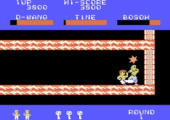
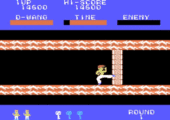
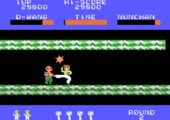
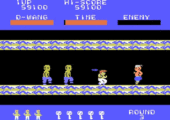
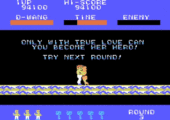
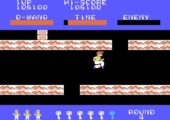
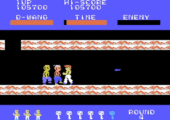
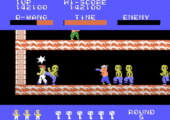
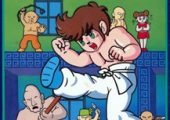
Recent Comments